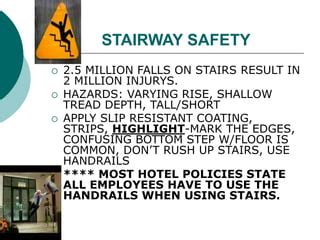Intro
Discover how the San Francisco Department of Public Health (SFDPH) prioritizes your safety and well-being. Learn about the 5 ways SFDPH protects you from health threats, ensures food safety, prevents disease outbreaks, promotes healthy environments, and responds to emergencies, keeping you and your community safe and healthy.
San Francisco is known for its vibrant culture, stunning architecture, and iconic landmarks, but have you ever wondered what goes on behind the scenes to keep its residents and visitors safe? The San Francisco Department of Public Health (SFDPH) plays a vital role in ensuring the health and well-being of the community. From disease prevention to emergency preparedness, SFDPH works tirelessly to protect the city's inhabitants. In this article, we'll explore five ways SFDPH keeps you safe.

Protecting Against Infectious Diseases
SFDPH's Communicable Disease Control and Prevention unit works to prevent the spread of infectious diseases such as tuberculosis, influenza, and COVID-19. The department conducts surveillance, testing, and contact tracing to identify and contain outbreaks. SFDPH also provides education and resources to the public on disease prevention and vaccination.
For example, during the COVID-19 pandemic, SFDPH played a crucial role in coordinating the city's response efforts, including testing, contact tracing, and vaccine distribution. The department worked closely with healthcare providers, community organizations, and other stakeholders to ensure that vulnerable populations had access to testing and vaccination services.
Ensuring Food Safety
SFDPH's Environmental Health unit inspects food establishments, including restaurants, cafes, and food trucks, to ensure compliance with food safety regulations. The department checks for proper handling, storage, and preparation of food to prevent foodborne illnesses.
In addition, SFDPH provides education and resources to food handlers on safe food handling practices. The department also investigates foodborne illness complaints and conducts regular inspections of high-risk food establishments.
Preparing for Emergencies
SFDPH's Emergency Preparedness and Response unit works to prepare the city for public health emergencies, such as natural disasters, bioterrorism, and pandemics. The department develops plans, conducts exercises, and trains staff and community partners to respond to emergencies.
For example, SFDPH has developed a comprehensive emergency response plan that includes protocols for emergency operations, communication, and logistics. The department also conducts regular drills and exercises to ensure that staff and partners are prepared to respond to emergencies.
Promoting Mental Health and Wellness
SFDPH's Mental Health Services unit provides mental health services to San Francisco residents, including counseling, therapy, and case management. The department also works to promote mental health and wellness through education and outreach.
For example, SFDPH has launched several initiatives to promote mental health and wellness, including a citywide mental health awareness campaign and a program to provide mental health services to homeless individuals.
Reducing Health Disparities
SFDPH's Health Equity unit works to reduce health disparities in San Francisco by addressing the social determinants of health, such as housing, education, and employment. The department develops policies and programs to promote health equity and works with community partners to address health disparities.
For example, SFDPH has launched several initiatives to address health disparities, including a program to provide health services to homeless individuals and a campaign to promote health equity in the city's African American community.
How SFDPH Keeps You Safe: By the Numbers

- 100% of food establishments in San Francisco are inspected annually by SFDPH's Environmental Health unit.
- SFDPH's Communicable Disease Control and Prevention unit investigates over 1,000 cases of infectious disease each year.
- The department's Emergency Preparedness and Response unit conducts over 50 emergency preparedness exercises and drills each year.
- SFDPH's Mental Health Services unit provides mental health services to over 10,000 San Francisco residents each year.
- The department's Health Equity unit works with over 50 community partners to address health disparities in San Francisco.
What You Can Do to Stay Safe

While SFDPH works to keep you safe, there are also steps you can take to protect yourself and your loved ones. Here are a few tips:
- Practice good hygiene, such as washing your hands frequently and covering your mouth when you cough.
- Stay up-to-date on recommended vaccinations, including flu and COVID-19 vaccines.
- Be prepared for emergencies by having a plan and a kit with essential supplies.
- Take care of your mental health by seeking help when you need it and practicing self-care.
- Get involved in your community by volunteering or participating in local health initiatives.
Conclusion
SFDPH plays a critical role in keeping San Francisco residents and visitors safe. From disease prevention to emergency preparedness, the department works tirelessly to protect the health and well-being of the community. By understanding the ways in which SFDPH keeps you safe, you can take steps to protect yourself and your loved ones. Remember, safety is everyone's responsibility!
What is the role of SFDPH in preventing infectious diseases?
+SFDPH's Communicable Disease Control and Prevention unit works to prevent the spread of infectious diseases such as tuberculosis, influenza, and COVID-19. The department conducts surveillance, testing, and contact tracing to identify and contain outbreaks.
How does SFDPH ensure food safety in San Francisco?
+SFDPH's Environmental Health unit inspects food establishments, including restaurants, cafes, and food trucks, to ensure compliance with food safety regulations. The department also provides education and resources to food handlers on safe food handling practices.
What can I do to stay safe during an emergency?
+Be prepared for emergencies by having a plan and a kit with essential supplies. Stay informed about emergency situations through reliable sources, and follow instructions from public health officials.
